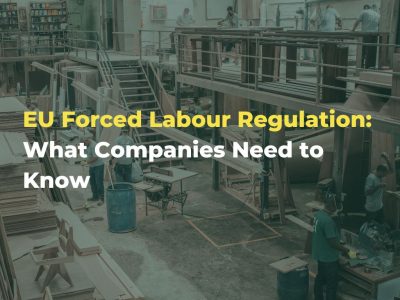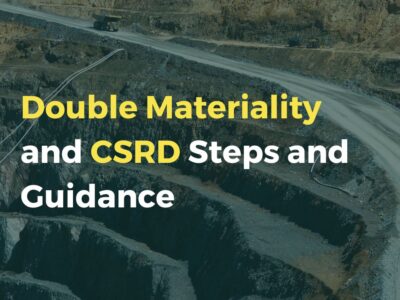
EU Forced Labour Regulation: What Companies Need to Know
In recent years, the global business landscape has witnessed a considerable transition towards sustainable and ethical practices. One crucial aspect of this shift is the growing emphasis on eradicating forced labour from supply chains.
The idea that forced labour is a “hidden risk” is a myth. It is a hidden risk in the sense of audit methodologies; however, forced labour is associated with entirely predictable business models and patterns that are sound indicators for assessing the risk of this issue in supply chains. Forced labour thrives in labour-intensive, low-skilled production activities, such as informal raw material extraction, as well as in industries with immense time and cost pressure, including consumer electronics assembly.
Forced labour occurs on a spectrum of exploitation. Where does decent work end and labour exploitation begin, and where does labour exploitation end and forced labour begin? In long and complex supply chains, businesses struggle to have a clear line of sight on human rights issues or enough influence with suppliers and recruiters to ensure all workers receive decent working conditions free from exploitation. The ILO Forced Labour Convention, 1930 (No. 29) defines forced labour in its Article 2(1) as: “all work or service which is exacted from any person under the menace of any penalty and for which the said person has not offered himself [or herself] voluntarily”. This refers to work performed under coercion, meaning work that a person did not consent to and cannot leave freely. Forced labour can take different forms, including debt bondage, bonded labour, trafficking for labour and sexual exploitation, slave-like practices, forced overtime, and child soldiers.
Around 27.6 million people are in forced labour around the world, in many industries and on every continent. The workforces that are most vulnerable to forced labour include Indigenous peoples, migrants, women, LGBTQ+ individuals, low-caste and racialised workers, and the kinds of jobs that are associated with this crime are temporary day labour or where informal workers are provided through intermediaries.
According to an International Labour Organization (ILO) 2022 report, the European Union (EU) had 4.1 million people in forced labour, with the highest number in the construction, manufacturing, and agriculture sectors. With the introduction of the Forced Labour Regulation by the EU, companies need to understand the implications, requirements, and steps necessary for compliance. In this blog, we will analyse the Forced Labour Regulation, detailing everything companies need to know, its potential impact on business supply chains, and the timeline for compliance.
Current Approaches to Forced Labour expose companies to significant risks of non-compliance with the regulation.
Forced labour monitoring methodologies often rely on global audit programs for data and evidence. Such audit-based approaches have inherent weaknesses and mostly fail to detect forced labour. This is because 1) they are a snapshot in time and do not present a pattern of abuse, 2) sites are made aware of audits before occurring and can ‘game the system’, 3) auditors do not have time or mandate to deep dive into risk specific factors, 4) due to knowing little else, victims of forced labour do not self-identify their circumstances in auditor interviews, 5) evidence is hard to gather and verify and is often deemed unreliable and not admitted in reports, and 6) auditors often fail to triangulate findings, which challenges reliability of the results
Understanding the Forced Labour Regulation
The EU Forced Labour Regulation is a pivotal regulation aimed at tackling forced labour within supply chains. It sets out specific legal requirements and obligations for businesses to identify, prevent, and address forced labour in their operations and supply chains. The regulation encompasses various aspects, including consulting, auditing, data management, due diligence, training, assessments, and legal compliance, to ensure businesses adhere to sustainable business legislations and regulations.
This regulation is the latest phase in the EU’s goal to ensure the sustainability of businesses operating in the EU and products on the EU market. The agreement of the Forced Labour Regulation follows the introduction of the Corporate Sustainability Reporting Directive (CSRD) and the EU Corporate Sustainability Due Diligence Directive (CSDDD).
Impact on Business Supply Chains
The Forced Labour Regulation directly affects businesses that operate within the EU and those that engage in trade activities with EU member states. Companies with complex, global supply chains need to be particularly vigilant as the regulation holds them accountable for the labour practices within their entire network of suppliers and subcontractors.
Timeline
The EU member states have already agreed upon the regulation, signifying a unified commitment to combat forced labour and uphold ethical business practices. The regulation is intended to come into effect in 2027 – three years after the legislation is adopted.
Importance of Preparation
Now more than ever, companies need to start preparing for compliance with the Forced Labour Regulation. The global spotlight on ethical sourcing and sustainable business practices necessitates proactive measures to identify and mitigate forced labour risks within supply chains. Failing to do so can result in legal repercussions, damage to brand reputation, and loss of consumer trust.
How our TDi Forced Labour Experts can Assist
Through the development of a detailed forced labour risk methodology that assembles TDi’s and third parties’ global risk data, together with our global expertise in supply chain risk analysis, we can deliver to clients bespoke third-party forced labour risk management tools.
We have a dedicated team of experts who specialise in forced labour risk assessment and compliance strategies. They can assist companies in various capacities, including:
– Conducting comprehensive forced labour risk assessments within supply chains.
– Providing tailored consulting and training to ensure understanding and implementation of the Forced Labour Regulation.
– Offering auditing and data management services to monitor and track compliance with the regulation.
– Assisting in due diligence processes to identify and address forced labour risks effectively.
Contact our team:
Soledad Mills – Senior Vice President
Julija Menise – Senior Vice President
James Hollins – Head of Data and Due Diligence
 Automotive
Automotive
The Dark Side of Electric Vehicle Supply Chains – Understanding Free, Prior and Informed Consent
18th July 2024 Critical Minerals
Critical Minerals
What You Need to Know about Double Materiality and the Corporate Sustainability Reporting Directive (CSRD)
28th May 2024 Critical Minerals
Critical Minerals
